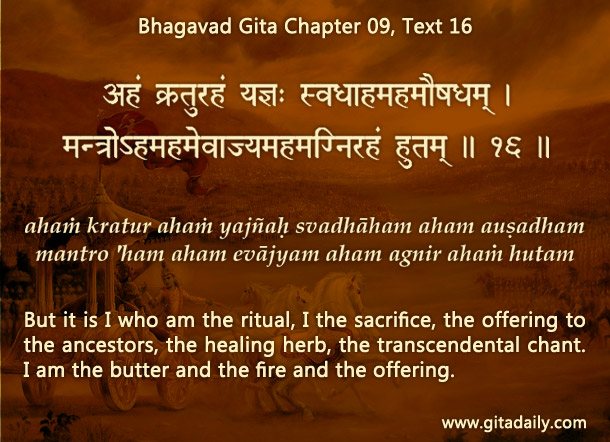A cricket match report may refer to a top batsman as “a force to be reckoned with.” Here, the batsman, a person, is addressed with the impersonal term “force” because that’s what the context calls for. The irresistibility of his aggressive batting may be underscored by calling him a force. When the context focuses on a particular aspect of a person, then the appropriate term is used.
Similarly, the Gita sometimes uses impersonal terminology to refer to the Absolute Truth, even when that Truth is personal. Such usage occurs because in the evolution of the Gita’s thought-flow, at that stage, the personal conception of the Absolute Truth may not be relevant or may not yet have been revealed. But as its thought-flow evolves, the Gita refers to the same Truth in personal terms.
Such a progression is seen in the Gita’s usage of referents while explaining the essential spirituality of the process of yajna. Initially, the Gita (04.24) points to this spiritual essence by equating the various aspects of sacrifice with brahma. Brahma is a generic term for the Absolute Truth, but frequently it is used to address the impersonal absolute. Its usage may suggest that the Gita deems the Absolute Truth impersonal.
But as the Gita’s thought flow progresses, it refers once again (09.16) to the various aspects of sacrifice. Significantly, here while conveying the spirituality of those aspects, it uses the unambiguous personal term aham, thus stressing that all those elements are Krishna. In other words, the earlier brahma is the same as Krishna. That the Gita refers to a personal concept with an impersonal term – and not a personal term to refer to an impersonal concept – becomes clear when it declares Krishna to be the supreme brahma (10.12) and those who know him thus as enlightened (15.19).
To know more about this verse, please click on the image
Explanation of article:
Podcast:
Download by “right-click and save”


If KRISHNA BHAKTI embraces it.everything impersonal becomes personal